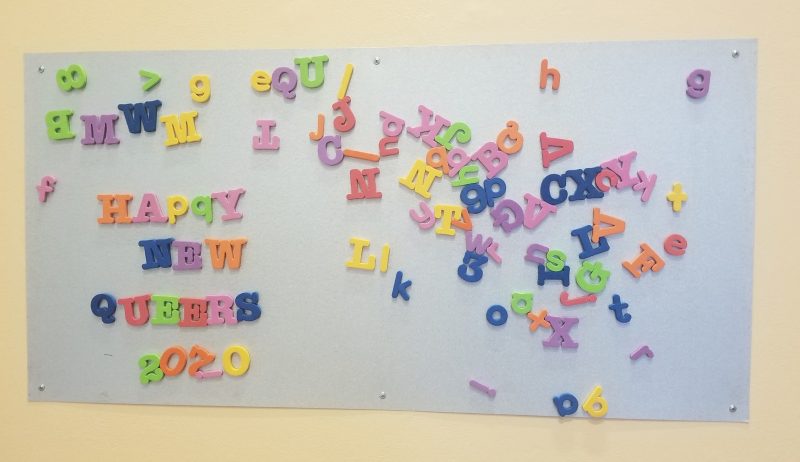
“Happy New Queers 2020.” Back in February, I saw those words arranged on a magnetic board that was part of The Beat of Resistance, the intended current exhibition at Asian Arts Initiative. It was one of many interactive aspects of the exhibition; there were also free-use guitars, small percussion instruments, and materials for zine-making and creating DIY instruments. It’s painful to read back on a review I had started writing sometime ago and consider the current danger of a space where people touch and play together.
The central belief of The Beat of Resistance is that music and joy are necessary tools for social justice work. Now more than ever does that message need to be shared. Fortunately, there still is a way this exhibition can engage us. It just so happens that every piece that had been curated into The Beat of Resistance, was already available online for free. The show is composed primarily of music videos and playlists, all of which will be linked to in this review.
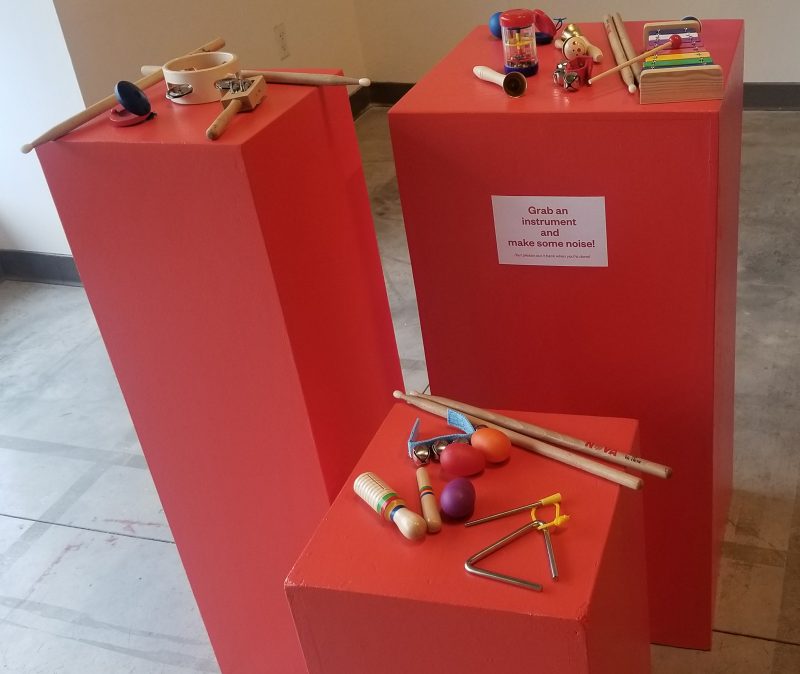
At first, the fact that Asian Arts Initiative curated an exhibition from materials that were already available online tickled the curatorial and philosophical parts of my brain. However in this current moment of quarantine, the decision to do so has made me re-evaluate the value of an exhibition of digitally accessible materials and prompted me to consider the importance for art institutions to curate not only for their in-person audience, but for those who don’t need a pandemic to be confined to their homes.
Originally, most of the videos were shared through various large monitors and headphone sets. Videos that were played out loud made up the sonic ambiance of the gallery. Such was the case for “Arabs Do It Better” a sleek video recording of a DJ set by Palestinan artist Marwan Hawash. The pumping rhythms were gently present throughout the room. At just over an hour, it is the longest piece in the exhibition, the second being No-No Boy’s visual album, “昭和17年 (1942)”. Set up on a small television, the densely constructed piece is composed of a doctoral body of research on various Asian American experiences transformed into folk songs. The visuals are comprised of undescribed archival images and videos of Asian communities across many nations and decades, giving “昭和17年 (1942)” both lyrical hyperspecificity and visual ambiguity.
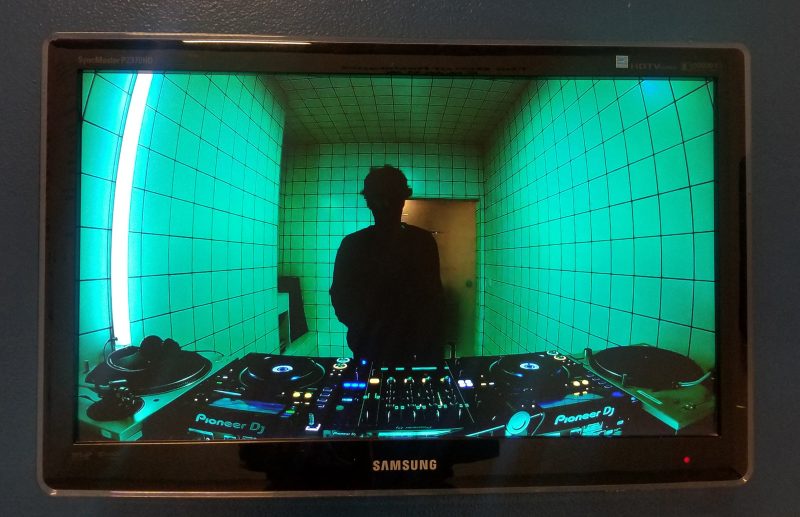
A section of the gallery dedicated itself to showcasing pop music. Here Philadelphia’s own REGO can be found, flaunting her style and melancholy in her chic black-and-white music video “Pray For You”. REGO’s piece is shown adjacent to queer pop artists SuperKnova and Ushamami, who each feature extensive LGBTQ representation within their music videos. (On YouTube, SuperKnova’s music video boasts the fact the cast is 100% queer/trans.) A queer musician does not need political lyrics to make a political statement; seeing someone, who has been socialized to not survive, express themselves loudly is activism. Showcased zine, “queer azn musicians” by Jess Wu, aka Mixed Rice Zines expresses this idea. The affirming publication consists of profiles on 27 queer asian musicians, who span a range of genres, locations and nationalities.
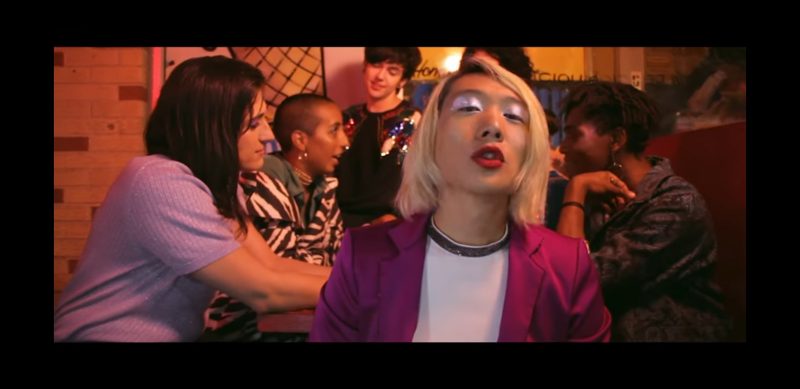
In the front of the gallery there was a wall card titled, “Music as Resistance” and it featured an excerpt from Ron Eyerman and Andrew Jamison’s book, Music and Social Movements: Mobilizing Traditions in the Twentieth Century. The excerpt describes “sounding,” a term used by Houston Baker to talk about the utility of music in the African American social tradition and also describes how American social movements all throughout history are shaped by the music that was created. Another card titled “Joy as Resistance,” featured an excerpt from Thomas Vernon Reed’s book “The Art of Protest: Culture and Activism From The Civil Rights Movement To The Streets Of Seattle.” The quote relates the importance of music in the Civil Rights movement, and social movements generally, as an outlet for relaxation, “In addition to songs drawn into the movement for specific practical uses, there was music around just for fun.”
These quotes stood out to me for mentioning of African American culture, a topic that is only explicitly brought up in The Beat of Resistance via these two wall cards. However Black culture is present implicitly throughout the exhibition. How could it not with hip-hop, R&B, and house musicians abound? Featured rappers Year of the Ox and SETI X, follow hip-hop tradition with each of their songs which discuss the person as political, social injustices, and rallying for change, both internal and external.
A playlist which features most of the music found in Beat of Resistance as well as other tunes was available to stream via an iPad in the gallery. As I listened to it, I found myself amazed, and ignorant, at how many musicians from various cultural backgrounds are building their sounds from the foundations Black musicians have laid down. A lack of curatorial commentary indicates complete acceptance, but I am curious what language could have been shared to open up conversations on cultural appropriation versus cultural sharing.
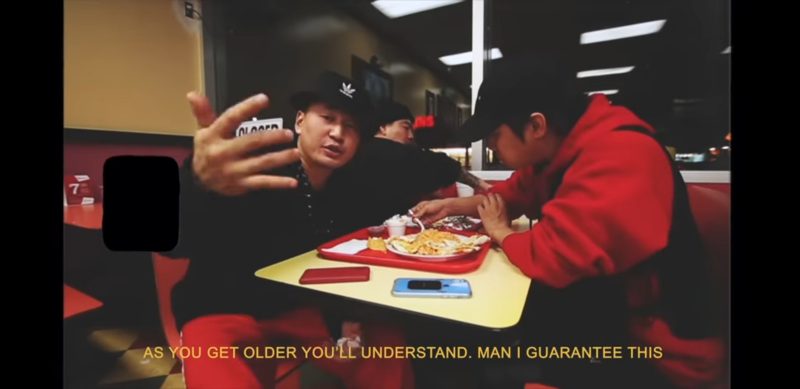
At the end of this review I am listing all of the available works in The Beat of Resistance for readers to listen, watch, and read. I initially thought I would end this review with the recommendation that if you were so inclined, to visit Asian Arts Initiative and bring friends so you could all enjoy the participatory aspects of the show together. The Beat of Resistance works best as a container for potential connections and sharing through sound. That is still true, even from our homes.
Featured pieces from Asian Arts Initiative’s The Beat of Resistance:
Asian Arts Initiative – “The Beat of Resistance” (playlist)
Awaaz Do – “Choli Ke Picche” (live performance)
Jess Wu (Mixed Rice Zines) – “queer azn musicians” (zine)
Marwan Hawash – “Arabs Do It Better” (live performance)
Melissa Dunphy – “Wild Embers” (live performance)
No-No Boy – “昭和17年 (1942)” (visual album)
Rachel Ishikawa – “Chinatown Beats” (web player)
REGO – “Pray For You” (music video)
SETI X – “Strange World” (music video)
SuperKnova – “Night’s a Bitch” (music video)
Ushamami – “Jinx” (music video)
Year of the Ox – “Word to the Hyphen” (music video)
The Beat of Resistance at Asian Arts Initiative
JANUARY 24 @ 10:00 AM – MARCH 27 @ 6:00 PM
[ED. Note: Asian Arts Initiative is CLOSED due to Covid-19]









